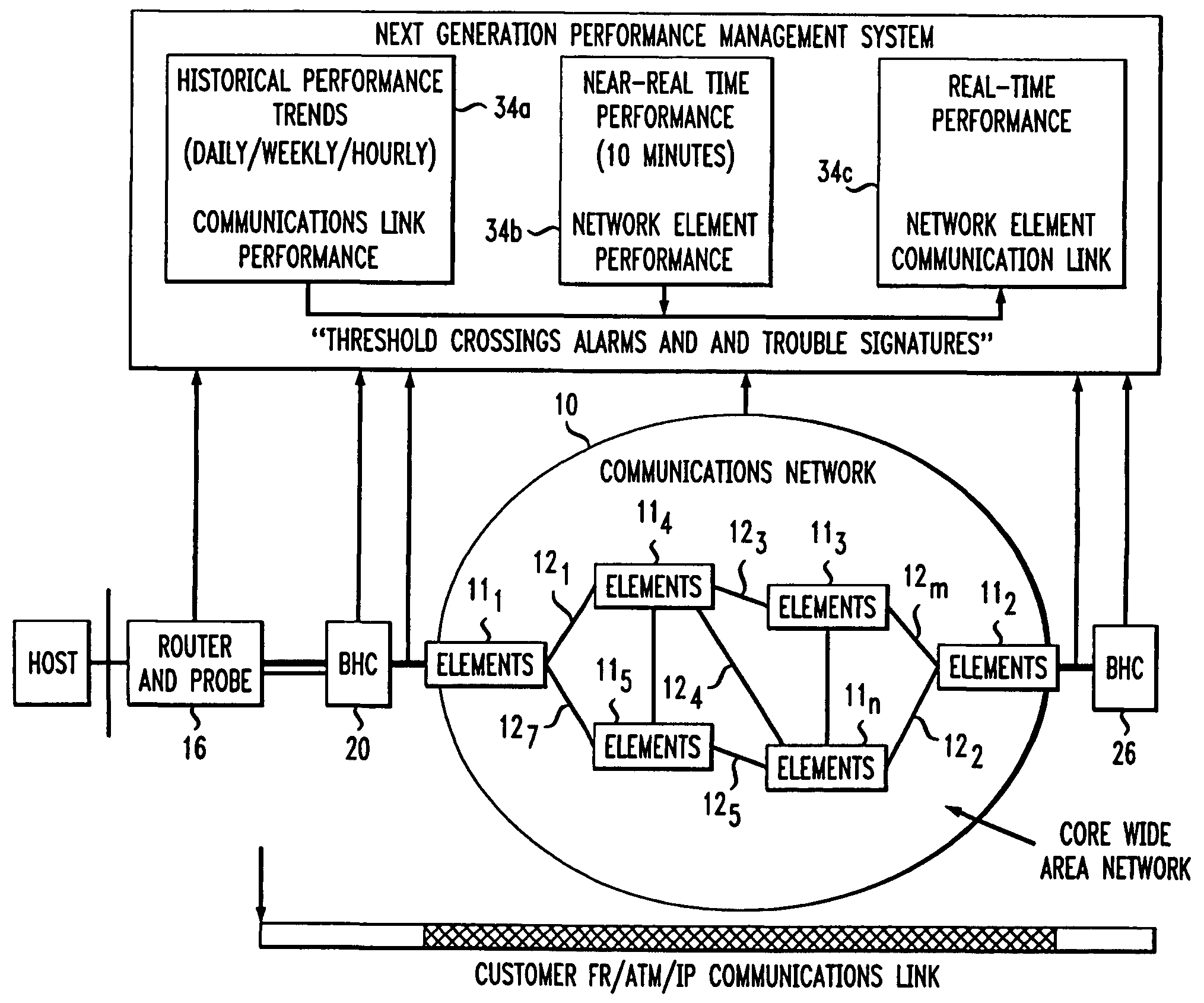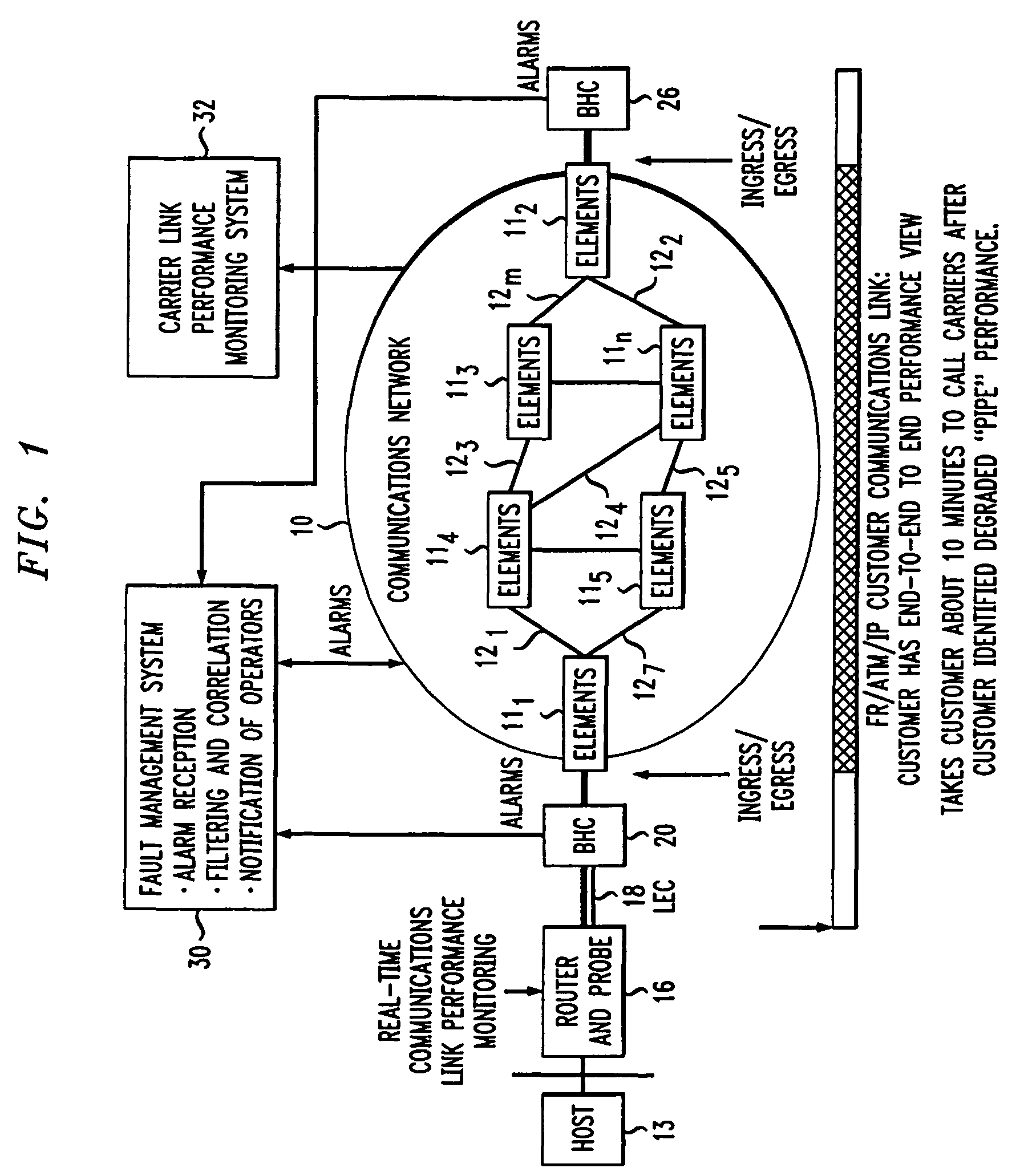Proactive predictive preventative network management technique
a network management and predictive technology, applied in the field of data network monitoring technology, can solve the problems of overwhelming network technicians, not necessarily providing the most practical solution, and a large number of alarms, and achieve the effect of easing performance degradation
- Summary
- Abstract
- Description
- Claims
- Application Information
AI Technical Summary
Benefits of technology
Problems solved by technology
Method used
Image
Examples
Embodiment Construction
[0009]FIG. 1 depicts a communications network 10 comprised of a plurality of network elements (e.g., routers) 111–11m (where m is an integer) interconnected by links 121–12n (where n is an integer). The network 10 communicates traffic (i.e., data packets) between two or more hosts, exemplified by hosts 13 and 14. A first router 16 links the host 13 to a first Local Exchange Carrier (LEC) 18. A first Backbone-to-Horizontal Cross-connect (BHC) 22 connects the LEC 18 to router 111 within the network 10. The router 111 is “homed” to the host 13 and serves as the ingress / egress router for that host. A second router 22 links the host 14 to a second Local Exchange Carrier (LEC) 24. A second Backbone-to Horizontal Cross-connect (BHC) 26 connects the LEC 24 to router 112. The router 112 is “homed” to the host 14 and serves as the ingress / egress router for that host
[0010]In practice, the routers 16 and 22 that ultimately link the hosts 13 and 14 to the routers 111 and 112, respectively, each ...
PUM
 Login to View More
Login to View More Abstract
Description
Claims
Application Information
 Login to View More
Login to View More - R&D
- Intellectual Property
- Life Sciences
- Materials
- Tech Scout
- Unparalleled Data Quality
- Higher Quality Content
- 60% Fewer Hallucinations
Browse by: Latest US Patents, China's latest patents, Technical Efficacy Thesaurus, Application Domain, Technology Topic, Popular Technical Reports.
© 2025 PatSnap. All rights reserved.Legal|Privacy policy|Modern Slavery Act Transparency Statement|Sitemap|About US| Contact US: help@patsnap.com



